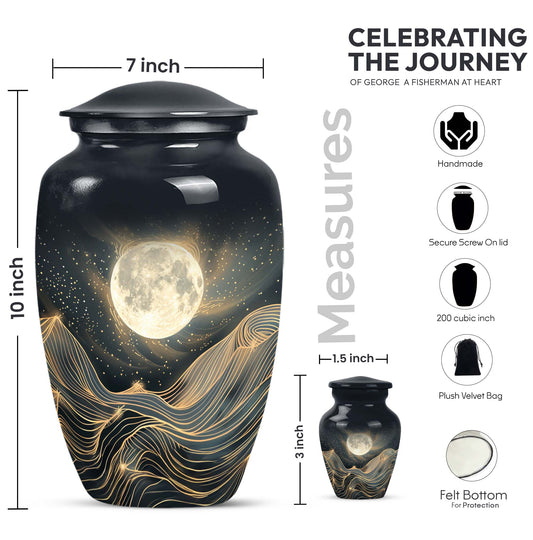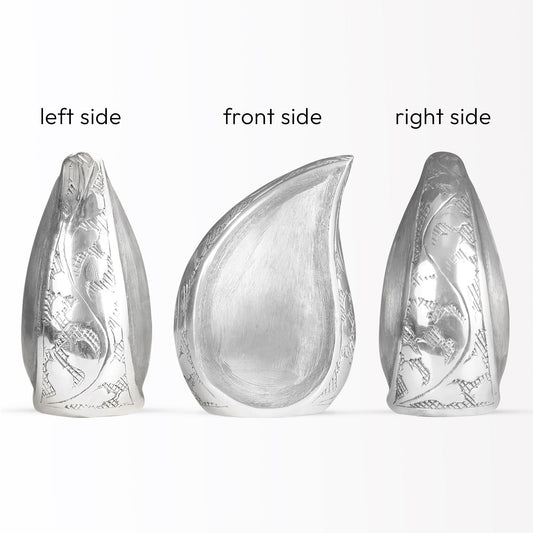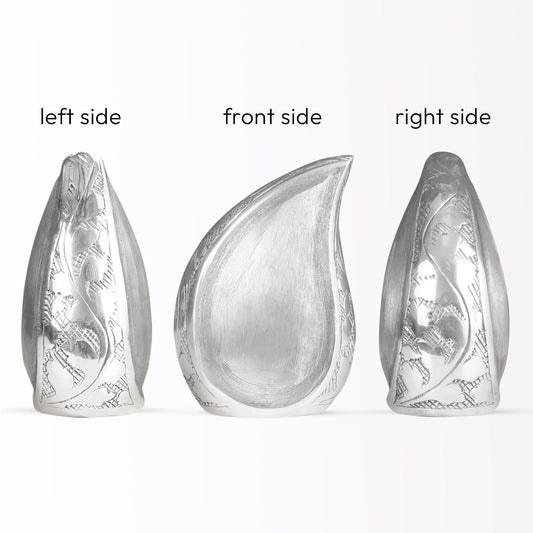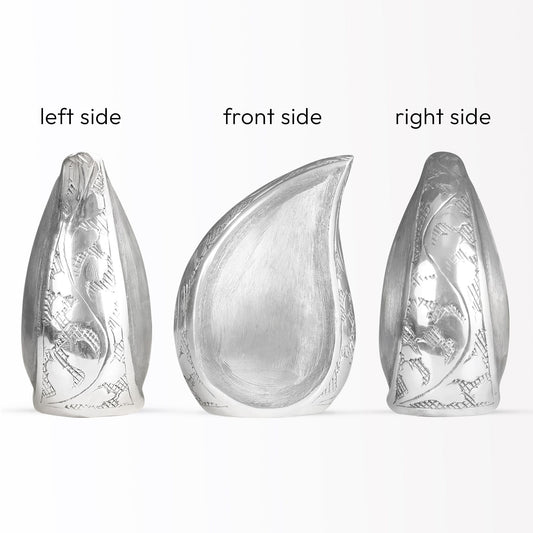Popular Urns
WHAT CAN BE THE POSSIBLE ENVIRONMENTAL IMPACTS OF CREMATION?

Cremation, as an end-of-life practice, has gained popularity over the years in far-off regions as well. It is primarily driven by cultural transformations, the increasing costs of traditional ways of burial, and the limitations of space in urban cities. And the most pressing issue associated with cremation is its environmental effects.
Cremation versus traditional burials

Cremation as a process, in comparison to traditional burial practices, is definitely in a better position in terms of carbon emissions. But there are drawbacks to that. It involves incinerating the human body at temperatures ranging from 1300 to 1800 degrees.
The body is reduced to ashes, producing few chemical compounds, gases, and fragments of hard bones as byproducts.

While this process sounds very simple and efficient in place of those complex traditional burials, let me tell you, it is almost impossible to have a fully eco-friendly cremation. The difference comes in numbers, though. Cremating a body produces around 230 kg of carbon dioxide, which, in comparison to the 800 kg of carbon dioxide released by one casket burial, can be called a good alternative.
Why some people prefer cremation over a traditional burial:
Families who are actually aware of the environmental hazards caused by human activities tend to follow the path of cremation nowadays. Burials are expensive, and they require commitments to be fulfilled in a short span of time.

Apart from that, the major drawback of burials is the embalming creams that are used during the ceremony, which later on pollute our waters and soil. Additionally, the resources that go into the formation of burial caskets and transportation raise the basket cost.
Understanding the severe impacts of cremation:
-
Greenhouse gas emissions:
The average burning of a body requires almost 2 hours of continuous fuel and fodder. This is a significant energy requirement employed in the whole process, and these fuels come at a huge cost to the environment.

Cremation is followed by the release of harmful greenhouse gases such as carbon dioxide and carbon monoxide, which trap the earth’s heat within the atmosphere and do not let it pass to the higher latitudes.
Think of this process happening on a wider scale globally, where millions of bodies are cremated annually. It causes a huge impact.
-
Mercury Pollution-
Another very concerning effect of cremation is the release of toxic emissions, particularly mercury compounds. Mercury contains a potent neurotoxin, which is produced when the body is cremated at higher temperatures.

This mercury gets vaporized along with carbon emissions and then enters the atmosphere, causing breathing and skin issues. Once airborne, it also settles into the bodies of water, causing mercury contamination, which later bioaccumulates in our aquaculture, posing a greater risk to wildlife.
-
Waste treatment-
Cremated remains of dead bodies can create havoc if not treated properly until the final end. Either these should be handed responsibly to the rightful owners of those holy ashes or they must be preserved and disposed of in an environmentally sustainable manner. Scattering the ashes anywhere illegally can get oneself in big trouble.

ALSO READ:
Meaningful Engraved Phrases on Cremation Urns
HOW TO CHOOSE THE RIGHT CREMATION PROVIDER
HISTORY OF CREMATION: From Ancient to Modern Times

























































































